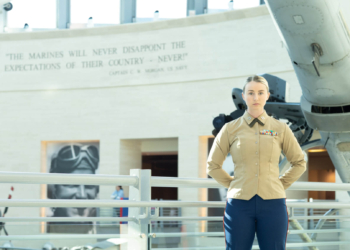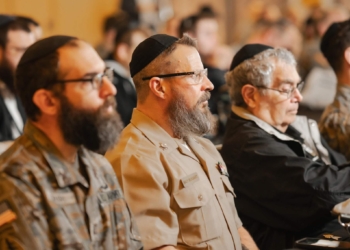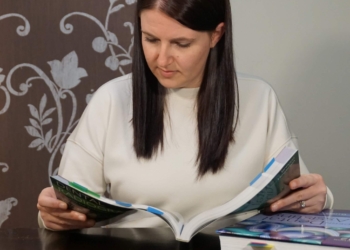There I was, perched on a folding chair in the front row of a large and crowded room, listening to the parade of speakers at my husband’s recent military retirement ceremony. The white uniforms — chokers, they’re called, for their high collar — contrasted sharply against the floor-to-ceiling American flag. The officers’ rows of medals shook softly as each man stood, strode to the podium, and delivered remarks about my husband’s nearly 30-year Naval career.
From the opening benediction to the “I stand relieved” salute indicating transfer of command to the final, otherworldly strains of the bosun’s whistle piping our family out of Navy life, it was as tightly choreographed as….well, as every other military ceremony I’ve attended since my husband and I got engaged, just three days after 9/11. We stood under the wedding canopy three months after that — and a week later, said the first of many goodbyes. It was the beginning of the Iraq War.
Nearly 18 years later, America is still sending troops to Iraq and Afghanistan. But our service as a family is over.
In a nod to the role a retiring service member’s spouse often plays during an active-duty career, I was called up on stage to be thanked. Our two children also received certificates acknowledging their “service to the nation.” I was touched: as with all military families, our kids and I have powered through multiple deployments and moves, and it’s nice to be acknowledged.
If it sounds like there’s a “but…” coming, there’s not. I have to admit, however, that I entertained a brief, flickering fantasy of being invited to the podium to share a few thoughts of my own. I was an involved military spouse for many years: first in my husband’s squadrons; then as a writer of articles, essays, and a book about how military families (ours and others) fared as the Iraq and Afghanistan wars demanded more and more from those on the homefront; then as an advocate and occasional speaker on behalf of military families.
During that time, I’ve observed substantial changes transforming America’s military families — the over 2 million partners and children of active-duty service members. (That number is twice as large when Reserve and National Guard families are included.)
Why do military families matter? It’s not always obvious to those without ties to someone who has served. But troops’ readiness starts at home: Research consistently shows that a service member’s performance, especially during deployments, is influenced by his or her family’s stability and satisfaction. That also plays a role in a service member’s decision to remain in the military, and sometimes in whether or not members of the next generation of the family choose to serve. In an all-volunteer system like ours, where the U.S. military is in a competition for talent, these are national security issues worthy of careful consideration.
If I’d been called to the microphone, I would have told the assembled guests that the two most surprising changes I’ve observed since marrying into the military in 2001 are both related to military families. These are inspiring developments in a world that’s conspicuously lacking in good news.
Military families now reflect American realities.
When I got married, I became a military wife, but sometime during the mid-aughts I discovered that in fact I was a military spouse. That’s broadly the period in which the term “military spouse” was adopted, with varying levels of enthusiasm, within each of the services. The debut issue of Military Spouse magazine in 2004 helped institutionalize the usage, which reflects the fact that men comprise an ever-growing number of people married to service members. In fact, the male spouse of an active-duty female officer, Jeremy Hilton, was named Military Spouse of the Year in 2012, just four years after the award was founded.
The 2011 dismantling of the “Don’t Ask, Don’t Tell” legislation opened the door to nontraditional military families, too: post-repeal, two groups, the American Military Partner Association and OutServe-SLDN, launched to advance rights for LGBT people and families in the armed forces. The groups recently combined their efforts, merging into the Modern Military Association of America. One of its newest programs helps military families with LBGTQ youth navigate the unique challenges of military service — like being stationed on bases in rural areas where they may feel isolated and without a community or resources.
For those inclined to file these developments under “political correctness,” it’s worth noting that diversity is nothing new in the military; as an organization, it has simply lagged in recognizing the people who fill its ranks. A 2013 study of the assessment of readjustment needs of veterans, service members, and their families from the National Academies of Science found that “Military families are more diverse than most statistics or research might suggest…the committee views the military’s definition of family as narrow and out of step with the diversity in family arrangements in modern society.”
It’s important that the public perception and official recognition of military families matches the reality of military families — not only because that’s how resources are allocated and legislation is passed, but because it will make a career serving the nation an option for people who may have thought there was no place for them and their loved ones.
Military families are now a focus of policy and legislation.
Everyone has heard some variation of this old joke: “If the military wanted you to have a family, it would have issued you one.” One of the most seismic shifts of the past two decades is that military families are now considered worthy of focused attention, research, and policy. Blue Star Families, founded by military spouses in 2009, helped make this possible with its annual Military Family Lifestyle Survey, which analyzes trends related to military life. Similar research drives the National Military Family Association’s policy platform, such as its position that access to quality, affordable child care is central to service member and family readiness. The Brookings Institution, Rand Corporation, and Syracuse University’s Institute for Veterans and Military Families are among the think tanks that now include military families in their research and analysis.
Military support organizations frequently partnered with Joining Forces, the initiative launched in 2011 by then-First Lady Michelle Obama and Dr. Jill Biden to support service members, veterans, and their families. For those of us who used to hearing government officials speak reverently of “sacrifice” but never seeing anything helpful emerge from the platitudes, it’s hard to overstate the impact of Joining Forces. Most significantly, it helped broker legislation enabling military spouses to transfer state-specific job credentials across all 50 states — especially important for those whose career licensing requirements rendered them unemployable after each PCS move.
I admit that my undelivered speech might not have been as exciting as those of officers who have experienced combat, tested cutting-edge technologies, or executed billion-dollar budgets. Like them, though, I believe that the military must be relevant, responsive, and ready for anything. Military families, equipped with the right tools, can help achieve this — and I have watched scores of my peers subordinate their own ambitions to achieve this worthy goal. I admire them for it.
But now, I too stand relieved.
Read comments








































